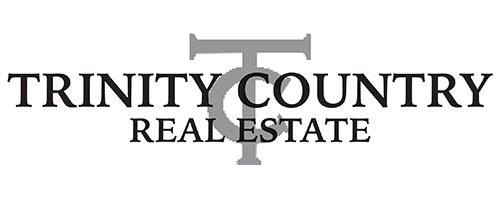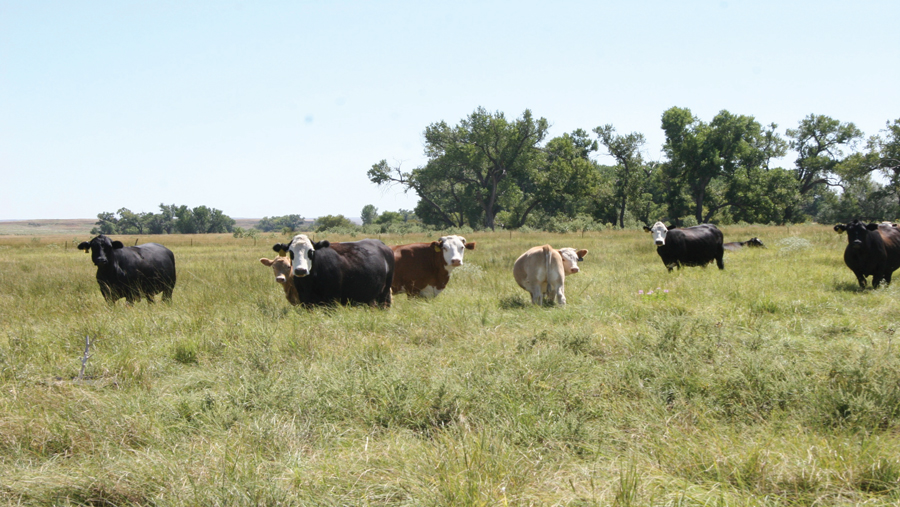By Gilda V. Bryant
Sometimes it is difficult for a rancher to get a handle on stocking rates, and that may lead to overgrazing. Fortunately, cattlemen can use proven management and stewardship strategies to protect their rangelands and pastures.
The Texas Grazing Lands Coalition (GLC) (grazinglands.org) is a non-profit organization that promotes good stewardship of grazing lands. Jenny Pluhar, executive director, says, “We have 10 grazing specialists across Texas to assist ranchers and grazers, funded with dedicated money from Grazing Lands Coalition through the Natural Resources Conservation Service (NRCS). We also provide programming and information to a wide variety of other organizations, such as Texas and Southwestern Cattle Raisers Association (TSCRA) and Texas Farm Bureau.”
Accurately figuring stocking rates enables producers to maintain healthy herds as well as protect valuable rangelands and pastures from overgrazing. Clint Rollins, grazing lands specialist with NRCS, says the term “stocking rate” is often used interchangeably with “carrying capacity,” which is incorrect.
- Stocking rate is the number of grazing animals in a pasture.
- Carrying capacity is the number of grazing animals the pasture will support based on historical forage production.
- Stocking density is the animal concentration in an area.
By practicing conservative stocking rate principles, Dale Smith, a TSCRA director, has improved the ranches in his care. He and his partner, Jay O’Brien, manage several historic properties, including the XL, JA, Turkey Track and O’Brien ranches in the Texas Panhandle. They won the Outstanding Range Stewardship Award, sponsored by TSCRA and the Texas Section of the Society for Range Management, in 2015, and went on to win the regional award for Region IV in the National Cattlemen’s Beef Association 2016 Environmental Stewardship Awards Program.
“Make sure your stocking rate doesn’t exceed the carrying capacity so you can be sustainable on a long-term basis, whether that’s with [stockers] or cow-calf [operations],” Smith advises. “You need to be able to calculate how much forage is available, what expected growth is based on annual averages and then be very conservative.”
Collecting yearly forage clipping data on key sites is the best way to determine an accurate estimate of current forage production. Since the proper protocol and calculations for estimating forage production can be confusing, contact a professional at NRCS, GLC or Texas AgriLife Extension Service for more information on this practice.
Following the “take half, leave half rule,” Smith says, is actually a 25 percent take, because 25 percent is used by wildlife, insects or is trampled by cattle. Half of the forage remains to keep pastures and rangelands healthy. He advises using prudent stocking rates in case of drought.
“There’s nothing abnormal about drought,” Smith stresses. “It’s going to happen. If you’re not prepared for it and don’t have an exit plan, such as reducing your stocking rate, shipping yearlings or finding other pastures for your cows, you’re going to be in a world of hurt.”
“[Develop] a drought plan, then the moment drought comes, and you need to start destocking, you’ve already made that decision,” Pluhar advises. “You’re not deciding on an emotional basis, hoping it will rain in a few weeks. It takes a lot of stress off of you as a businessman.”
Rollins reports that if producers want to make a profit, they cannot buy their way out of a dry spell by hanging on and buying supplemental feed. Pluhar likes the flexibility of having irrigated cropland available for additional grazing.
Record annual forage production to set stocking rates
Keeping detailed records of livestock performance, stocking rates and annual forage production are vital to a successful livestock operation. Referring to written estimates of annual forage production and rainfall amounts are critical for setting stocking rates and making timely management decisions during precipitation shortages. Smith uses a comprehensive computer program that includes an accurate inventory of cattle populations and the number of days they are in a particular pasture. The ranch foreman also enters data as needed.
“The best way to keep records is any method that works for the rancher,” Rollins explains. “They need to be kept regularly and accurately, whether it’s a Big Chief tablet or writing with a dry erase marker on the windshield. Keep a record of how many head, when they entered and left the pasture. Try not to hit that same pasture at exactly the same time year after year. Fall deferment is just as important as spring deferment every 4 or 5 years.”
This practice is especially true in mid-grass or tall-grass prairies. A producer might be better off stocking more intensely during spring and early summer, then resting pastures in late summer and fall.
Keep an eye on the grazing impact in areas that get moderate use, as well as how various key plant species are affected. Producers should learn the top 5 beneficial and undesirable plant species on their properties, including those that grow in different soil types. Using all this collected data to balance the number of stock animals to the carrying capacity is not a one-time calculation — it changes yearly.
Another serious issue that affects stocking rates is the larger cattle being produced today. In the 1960s, cattlemen figured stocking rates based on a 1,000-pound animal that consumed 26 pounds daily. Now the average body weight is 1,200 to 1,300 pounds and some cattle are at 1,400 pounds.
“You can’t graze as many 1,400-pound cows on the same pasture as you can 1,000-pound animals because your daily intake is more,” Rollins explains.
Evaluate the pasture’s carrying capacity and apply that to stocking rates. Pluhar says that instead of grazing 100 head of heavier cattle, a rancher might consider 120 smaller cows that wean lighter calves, which may bring more money.
Know your grazable acres
The most critical information a cattleman must know is the number of grazable acres available for livestock use. On every property, there are geological or manmade areas where cattle cannot graze. There may be steep slopes, dense woody vegetation, geological erosion, roads or surface water.
Homes, barns and other outbuildings also reduce grazable acres. With modern technology, experts at NRCS can determine actual grazable acres. Armed with a grazable acres map, a rancher can also determine where to add water wells. Best of all, NRCS does not charge for this valuable service.
Healthy rangelands and pastures also influence enormous quantities and quality of rainwater for people who have never set foot on a ranch. Overgrazing impacts water conservation because there is no litter in the soil or healthy plants to slow rushing water. The ground retains less water and there is no infiltration to recharge the aquifer. When valued plant species are overgrazed they die and are usually replaced with undesirable, thorny plants that have little value for grazing animals. This is a prime example of a manmade drought.
Apps that help producers make important management decisions include FarmLogs (https://farmlogs.com), a free service that notifies users of recent rainfall totals. Pasture Map (pasturemap.com) tracks grazing, fences and other items and is free for up to 100 animals. The Stocking Rate Calculator for grazing livestock, created by the Texas AgriLife Extension Service, is available for a nominal fee.
Other great tools for ranchers are permanent monitoring points. Smith uses 8-foot square enclosures, taking fall forage clippings to determine the amount of vegetation the area produced per acre. He also compares the appearance of these protected grasses to the grazed plants outside of the enclosure. When he sees noticeable differences, it is time to move cattle.
“It doesn’t lie to you,” Smith says. “It removes the human component of hope for the next rain. It provides a stark reality of what is truly going on.”
Place monitoring points next to a road for easy access, and in locations where cattle often graze. Position them in areas that have different soil types, such as sandy loam or clay. A producer with 200 acres in East Texas might need 2 or 3 monitoring points, while a rancher with 80,000 acres could build 8. A grazing specialist can help producers determine the location and number of monitoring points.
Checking plant composition every 5 years is another way to stay in touch with those populations.
Creeping normalcy is a common situation in which people fail to notice small incremental changes over time. However, if folks see a 20-year old photo, they can easily spot differences. Take annual photos of the same focal point on the property, such as a hill, mesa or valley, to spot changes in plant populations.
“It’s pretty shocking,” Smith explains. “We have a lot of historic photos. The redberry juniper and mesquite encroachments are incredible.”
In the late 1800s, cattlemen did not understand the consequences of stocking rates. According to historical accounts, the animal densities on ranches in the Texas Panhandle were excessive. Smith says producers have learned a lot about proper grazing management over the last 100 years.
“Our mission statement for the ranches we operate is to produce a sustainable profit on a long-term basis while improving the asset base,” Smith explains. “That asset base is the rangeland, fences, water facilities and camps we have on the ranch.”
“Stewardship is basic,” Pluhar explains. “God said His creation was good; then He gave humans instructions to take care of it. Whether it is living in town taking care of a house, family, yard and bank account, or a valuable resource such as rangeland, it is incumbent upon us to [care for it]. Stewardship is important not just to the rancher and his family, but to everybody in the state of Texas. Use that USDA-NRCS Grazing Specialist and extension specialist. Do not feel intimidated. You cannot know everything. I learn a lot from the ranchers I work with, and we have other skill sets [to offer them]. Use the resources that are available to you.”
Rollins urges producers to attend field day workshops, read timely ranching management articles and keep abreast of the latest technology and monitoring protocols. The more a producer understands his resource base, the easier management decisions become.
“Work to continuously improve your range by learning more about proper range management practices, including prescribed burning, brush management, water development, proper stocking and grazing,” Smith advises. “Understand that there are limitations to what that [the land] can produce. Be careful of snake oil salesmen who tell you that you can double or triple your stocking rates if you try certain grazing practices. We are only going to get so much rainfall. The grass is only going to produce so many pounds. You have to understand that.”
Figuring accurate stocking rates, while implementing good stewardship practices in rangelands and pastures, allows a rancher to build an economically sustainable operation. Best of all, the ranch will be in good shape for the next generation.
“Stocking Rates” is excerpted from the February 2017 issue of The Cattleman magazine.

